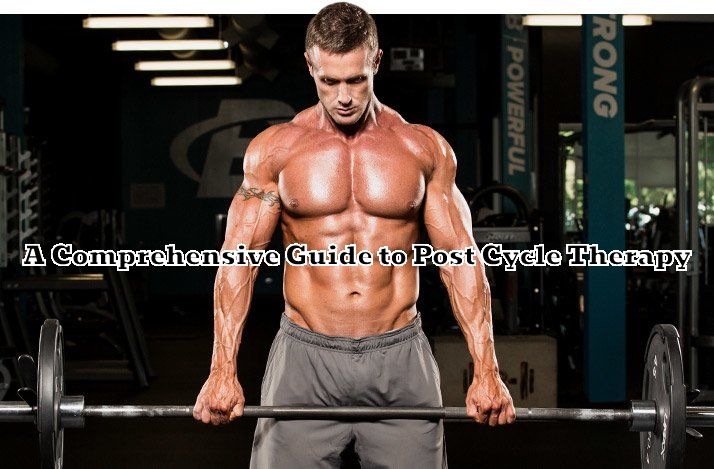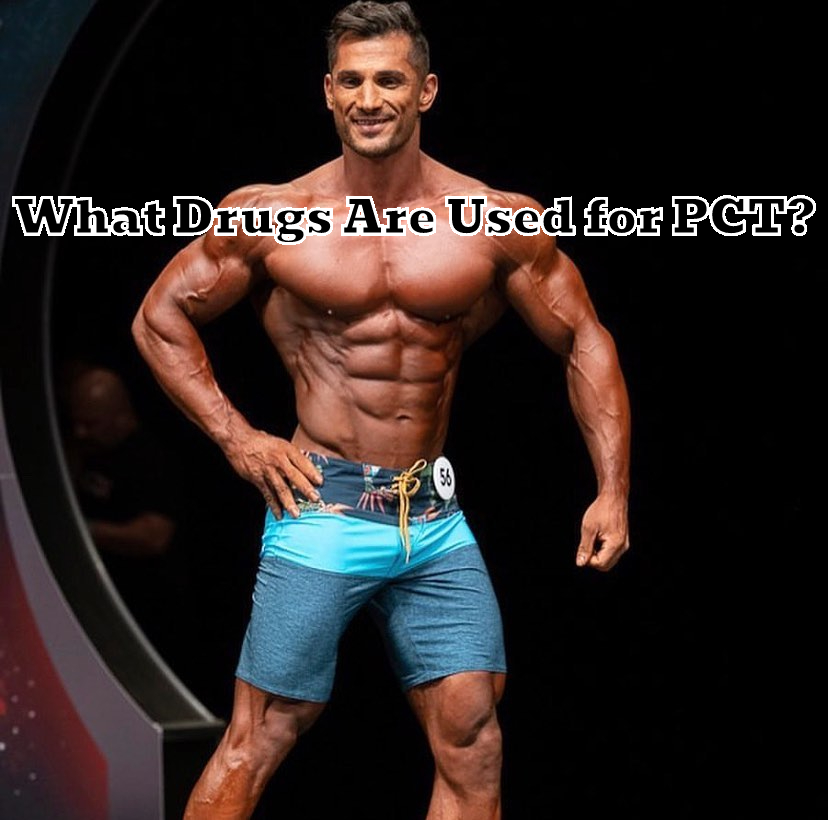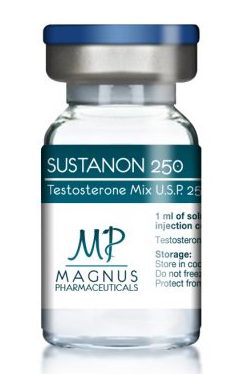
Sustanon 250 Injection is a combination medicine used in the treatment of male hypogonadism. It increases the testosterone levels in adult men and helps improve various health problems including impotence, infertility, low sex drive, tiredness, and depression.
Sustanon 250 Injection is given by a doctor or a nurse. You should not self-administer this medicine at home. Use it regularly to get the maximum benefit from the medicine. It may take some time for the medicine to be effective. The course of the treatment should be completed for better efficacy of the medicine.
Use of this medicine may cause few common side effects such as an increase in red blood cell count and hemoglobin in the blood. Some people may also experience allergic reactions such as itching, rashes, and swelling of the lips or face. If you experience any of these side effects, consult your doctor without delay. Your doctor may help you with ways to prevent or reduce the side effects.
Sustanon 250 Injection is given by a doctor or a nurse. You should not self-administer this medicine at home. Use it regularly to get the maximum benefit from the medicine. It may take some time for the medicine to be effective. The course of the treatment should be completed for better efficacy of the medicine.
If you are considering trying performance-enhancing drugs, you probably have questions about Post Cycle Therapy (PCT). We give you all the information you need in this comprehensive guide.
While it is possible to train hard and get the physique you want, the eye-popping physiques of professional bodybuilders are not solely the result of eating zillions of calories and spending hours pumping iron in the gym. Those bulging muscles need a helping hand beyond the natural capability of any man, and that is where performance-enhancing drugs (PEDs) like anabolic-androgenic steroids (AAS) come in.
Though we don’t advocate the use of steroids for non-medical use, if you are considering this route to get the physique you desire, we share the information you need to stay safe and mitigate the risks involved.
Anabolic steroids are a synthetic form of testosterone that leads to negative consequences like hormonal imbalances. Post cycle therapy (PCT) is a protocol we suggest following with a professional if you are taking steroids. Our comprehensive guide to PCT should answer your questions and help you decide if it is worth doing and why it’s necessary.
What Does Post Cycle Therapy Mean?
When you take exogenous testosterone (the synthetic anabolic hormones, known as steroids), your natural hormone production (endogenous testosterone) is suppressed because your body is getting plenty of testosterone. It is not advised to take steroids habitually because of their many side effects, which we talk about below. So when you go off the steroids, your body’s natural ability to produce testosterone is compromised.
Most people use steroids in “cycles” to prevent building a tolerance but also to allow the hypothalamic-pituitary-gonadal axis (HPTA) — the system that regulates hormone production — time to increase testosterone production after use. But with any steroid use, the flood of synthetic hormones throws your body off balance. Once the user ceases anabolic steroid use, the body is slow to recover to normal levels of testosterone. Aside from ill health, the post-steroid user can be vulnerable to muscle mass loss and increased oestrogen levels. Side effects can cause a deeper voice, loss of libido, mood swings, depression, fatigue, water retention and even increased breast size. To mitigate the negative side effects, you use post cycle therapy (PCT), which is a pharmaceutical-based protocol that can help speed up the transition to normal testosterone levels while lowering the side effects.
Under the care of a qualified physician, a combination of legitimate medicine is used to restore the hormonal balance of the user. Oestrogen levels reduce and a natural level of endogenous testosterone is reached. This method, with its regulated healing of the hormone system, is a real no-brainer if you are a steroid user. If you don’t plan to use post cycle therapy after steroid use, you’ll find it’s much harder for your natural testosterone to bounce back, and you can lose the muscle gains you worked so hard to achieve.
When Should I Start Post Cycle Therapy?
If using any drugs that suppress your natural testosterone production, we recommend starting a PCT protocol after ending the cycle. For SARMs (selective androgen receptor modulators) and prohormones, you can start right after you stop taking them. For steroids, wait a week to start PCT. Ideally, you would seek the guidance of a qualified doctor to outline a treatment and track your progress. Dr Tan is happy to help with your post cycle therapy whether you are using prohormones, SARMs, growth hormones, or anabolic steroids. If you are a natural, assisted, or a long-term AAS user, we are here to give you the most objective advice and the best medical help without judgement.
How Long Does PCT Last?
Starting from when the body is completely free of anabolic steroids, the PCT drug programme usually lasts for around one month to six weeks. However, this is dependent upon individual circumstances, such as the kind of drugs and the dosage taken — and for how long. Keep in mind that if you are a regular steroid user, you will need prescriptions to help regulate your hormone levels and need to seek the guidance of a doctor.
If necessary, this therapeutic period can be extended for several weeks. Naturally, slow-release steroids will take longer to leave the body, so it could be several weeks after the last injection was administered until the body is free of artificial testosterone.
What Drugs Are Used for PCT?

The drugs you need to carry out the post cycle therapy protocol can vary depending on individual circumstances. There are over-the-counter products available for some cases, like testosterone boosters and oestrogen blockers, but generally, these are not powerful enough for steroid users. We can’t give recommendations here, but the following medications are commonly used in post cycle therapy and require a prescription:
- Clomiphene (brand name: Clomid)
- Tamoxifen (brand name: Nolvadex)
Clomid and Nolvadex are SERMs (selective oestrogen receptor modulators) — not to be confused with SARMs — which regulate post-cycle oestrogen production and block the negative effects that it has on the body. After stopping anabolic steroids, oestrogen levels can skyrocket and cause hormonal mayhem hence the need for the regulatory drugs.
Clomid influences the oestrogen receptors in the hypothalamus and pituitary glands. This helps release luteinising hormones (LH) along with follicle-stimulating hormones (FSH), both of which are crucial to fertility. A normal hormone balance is essential for healthy sperm production.
Nolvadex stimulates sky-high rates of LH increase and prevents oestrogen surges, which can be dangerous. Stroke, prostate disease and heart issues can occur if oestrogen levels suddenly rise and are not addressed. Nolvadex is the top dog at reducing oestrogen levels, helping to bring that precious endogenous testosterone back to a stable, healthy level.
Likewise, supplements, such as phosphatidylserine and acetyl-l-carnitine, may also be used within the PCT to lower cortisol levels. High post cycle levels of this stress hormone can lead to catabolism. Think of the term anabolic as building up, as in new tissues, complex compounds and muscle bulk. Catabolic is its opposite, breaking down components vital to human wellbeing, such as those same body tissues and complex body compounds.
The pair make up metabolism. An unhealthy post cycle catabolism can lead to excess fat and loss of muscle mass — and all that hard work will disappear! More seriously, catabolism can lead to general ill-health if uncontrolled.
It should now be crystal clear that post cycle therapy is not just a great idea to return endogenous testosterone to its peak natural levels but is also an essential part of post cycle healing. To not have a recognised PCT after stopping anabolic steroid use is dangerous and not recommended.
Should I Be Training during PCT?
Overtraining should be avoided during this time as the body needs time to recalibrate and restore itself to where it was before synthetic hormones were introduced. While it is understandable to want to keep the muscle bulk from the steroid cycle, PCT should include a slight change in your training routine.
You shouldn’t stop working out completely, but consider cutting back on reps, or not adding extra weight onto usual lifts or undertaking heavy training. That said, the intensity should still be high enough to maintain muscle. While your body is recuperating, your training needs to settle down and find its level during PCT. Not too little, not too much — it’s all about finding the right balance.
What Other Considerations Should I Take during PCT?
Be gentle with yourself and realise that many of the negative side effects you are feeling are normal. The body needs time to heal and return to normality. Nutrition is, as always, a key part of healing. Eat sensible, nutrient-rich, high fibre food and hydrate the body with plenty of water. Any supplements can affect the hormonal balance of the body — so, again, the doctor overseeing the PCT should be consulted beforehand.
